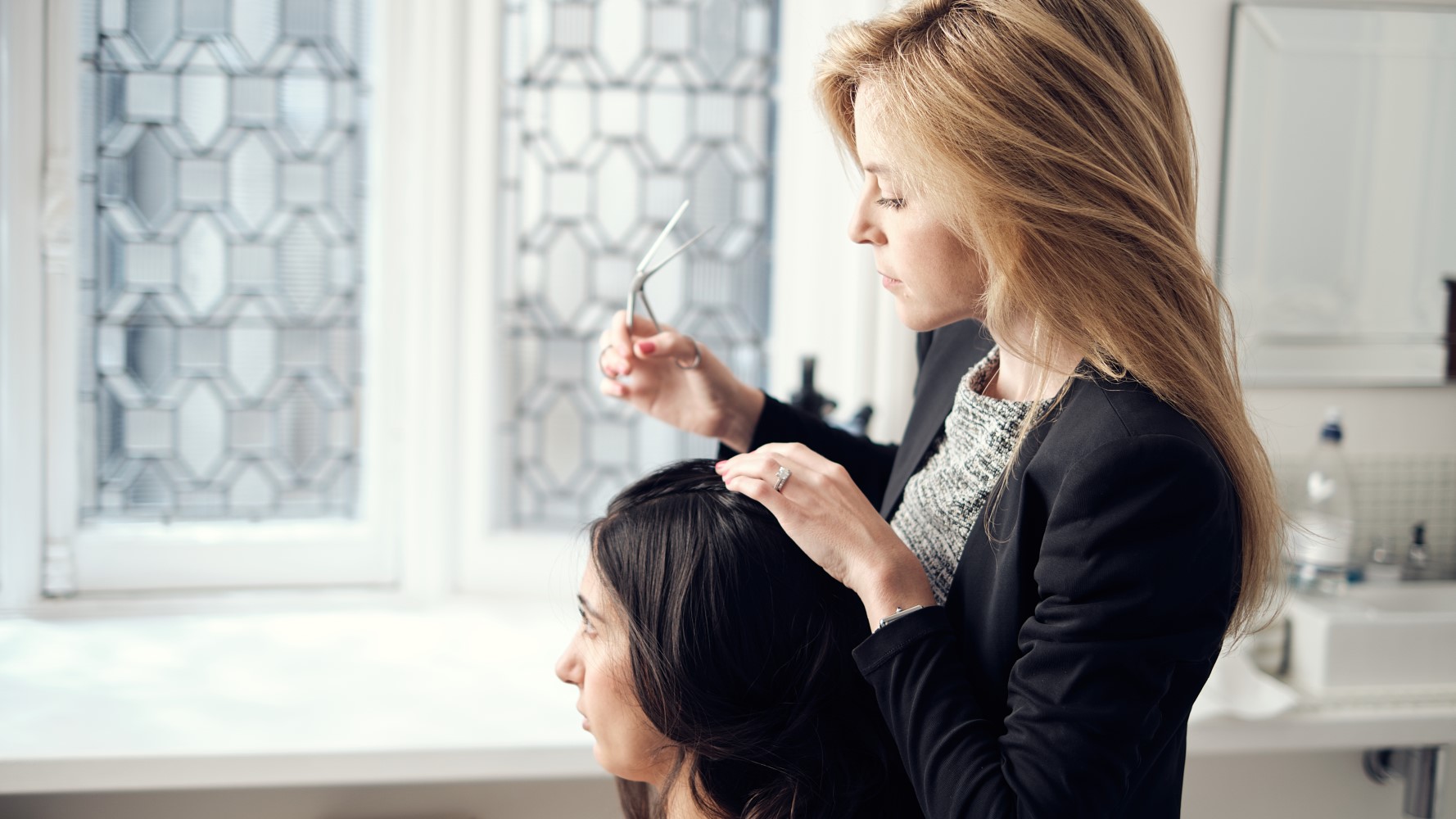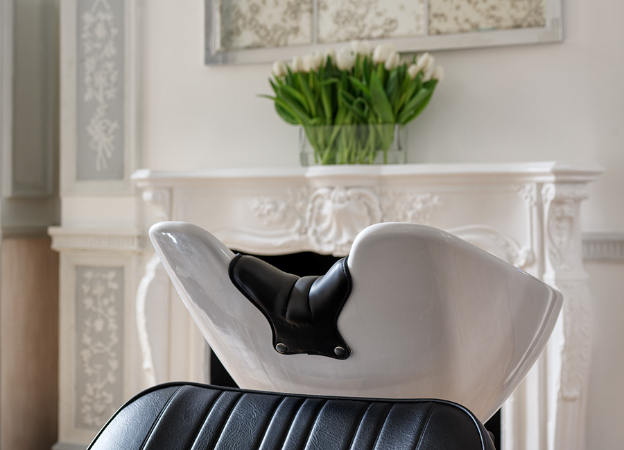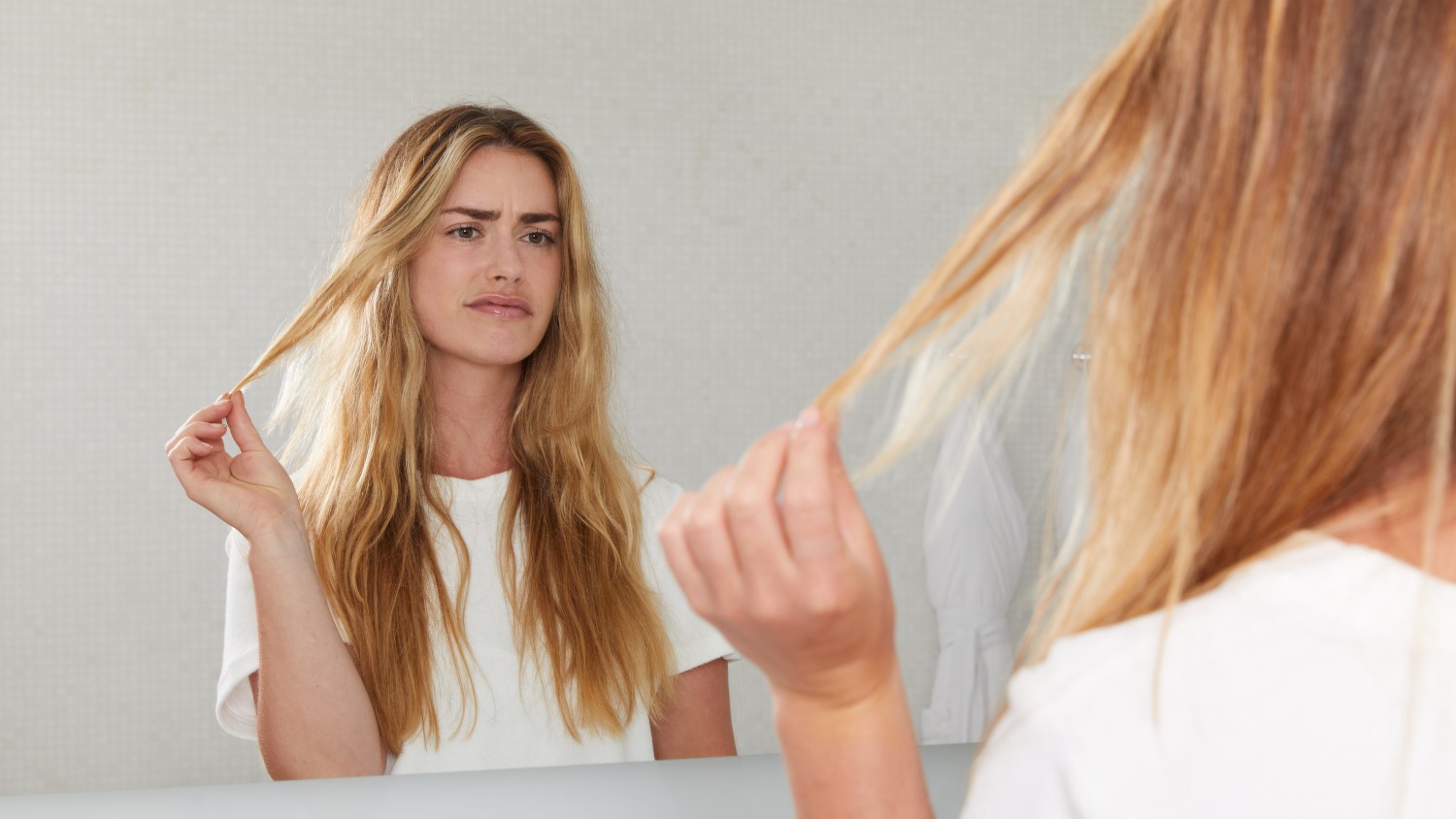FIND THE RIGHT HAIR PRODUCTS FOR YOU
At Philip Kingsley, our Trichologists create products for hair textures, scalp concerns and styling challenges. Now you can take the Online Hair Quiz to discover the right products for you and your hair.
You can leave the house after achieving a smooth, sleek style, only to find yourself thwarted by frizz half an hour later. Frizz occurs in all hair textures, though we see it most often in curly hair and fine hair.
There is a lot you can do at home to get rid of frizzy or flyaway hair. Or if you prefer to seek help from the professionals, our Clinics in London and New York specialise in hair and scalp treatments, and will be delighted to welcome you.
What Causes Frizzy Hair?
THE MAIN CULPRIT IS MOISTURE IN THE AIR
Your hair contains hydrogen bonds. These are weak chemical bonds that are broken by the presence of water, and are reset when your hair dries. This is useful for styling, because it means that you can manipulate your hair into different looks using heated tools (blow dryers, straighteners etc).
The bad news is, your hair’s hydrogen bonds are not just broken and reset when you want them to be: they are also affected by moisture in the air, a.k.a. humidity.
How frizz-prone you are depends on your hair’s natural structure (i.e. If it is naturally straight, wavy or curly) and how porous it is (i.e. how easily moisture enters your hair shaft). It is also strongly dependent on the weather. For instance summer is often the worst time for frizz due to high humidity levels.
VARYING LENGTHS OF HAIR CAN MAKE YOUR STYLE LOOK FRIZZIER
No one’s hair is exactly the same length all over, due to each follicle’s different hair growth cycle. Since your hair is slightly different lengths throughout your head, it may have the tendency to stick out in different places. Some individual hairs also may be curlier, wavier or wispier than others. If you have a lot of layering in your style, you may also find it looks frizzy faster.
DRYNESS CAN AFFECT HOW FRIZZY YOUR LOOKS
If your hair is dry, it will be more brittle and likely to break. If hairs snap off in various places around your head, they can stick out and make your style look frizzy.
DAMAGED HAIR
If your hair is damaged (for example from chemical processing or heat styling) it will be more porous, allowing more moisture in through the cuticle.
Our Top Tips to Prevent Frizz
USE A SMOOTHING PRODUCT
When you style, use a product such as our Finishing Touch Polishing Serum, which creates a barrier between your hair shaft and the humidity in the air. These products tame frizz discouraging your hair from absorbing excess moisture as you go about your day [or night]. Their key ingredients are silicones — which are moisture-resistant, light in texture, and usually formulated to make your hair sleek and shiny. Certain silicones, such as the ones in our Polishing Serum, actively moisturise your hair.
KEEP YOUR HAIR HYDRATED
Dry hair is more prone to breaking, and broken hair tends to look frizzy. Hydrate your hair with a weekly pre-shampoo conditioning treatment, such as our cult product Elasticizer, to help prevent breakage.
USE A SHIELDING SPRAY
A daily protective spray, such as our Daily Damage Defence, will help protect your hair from weathering and damage.








